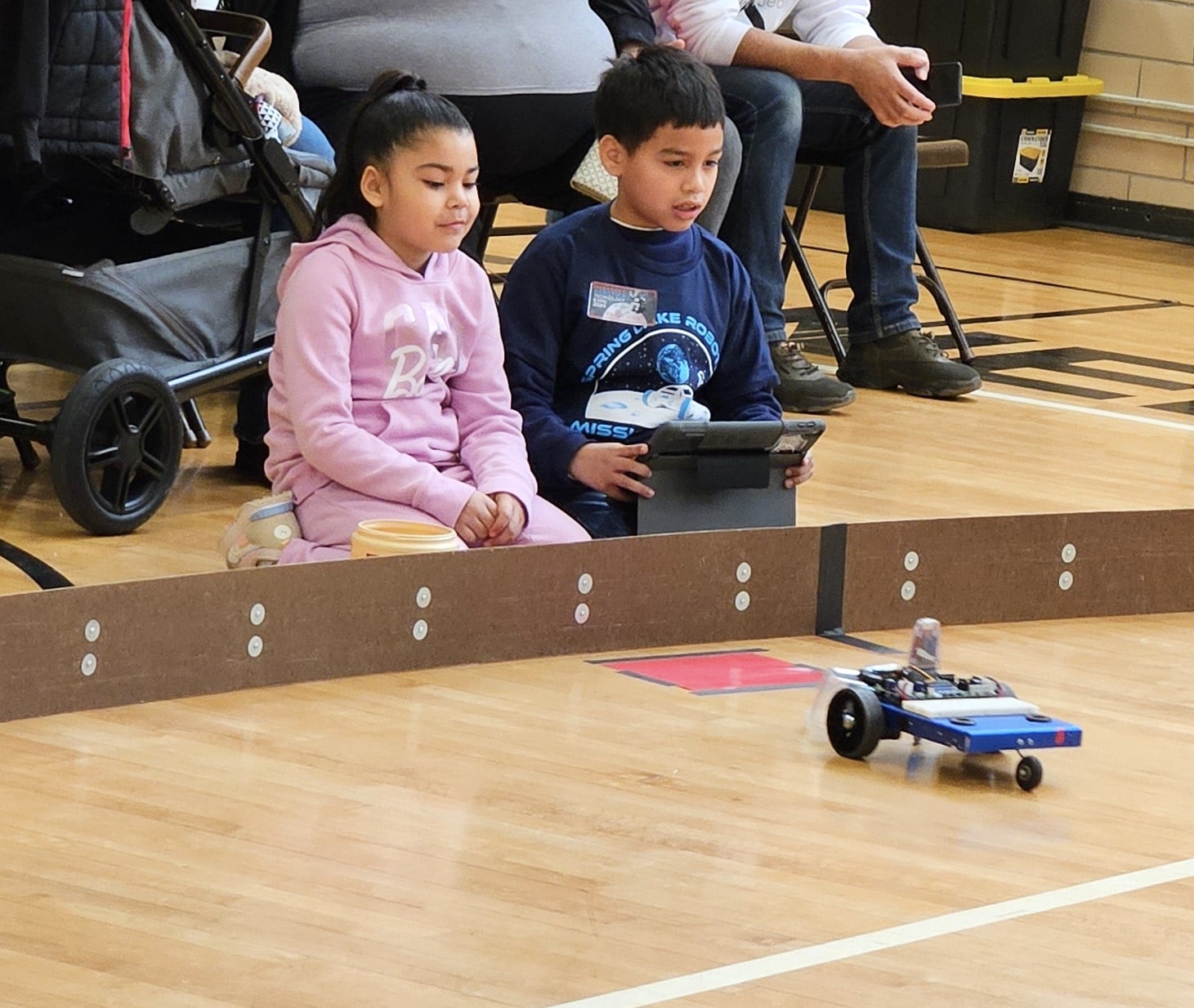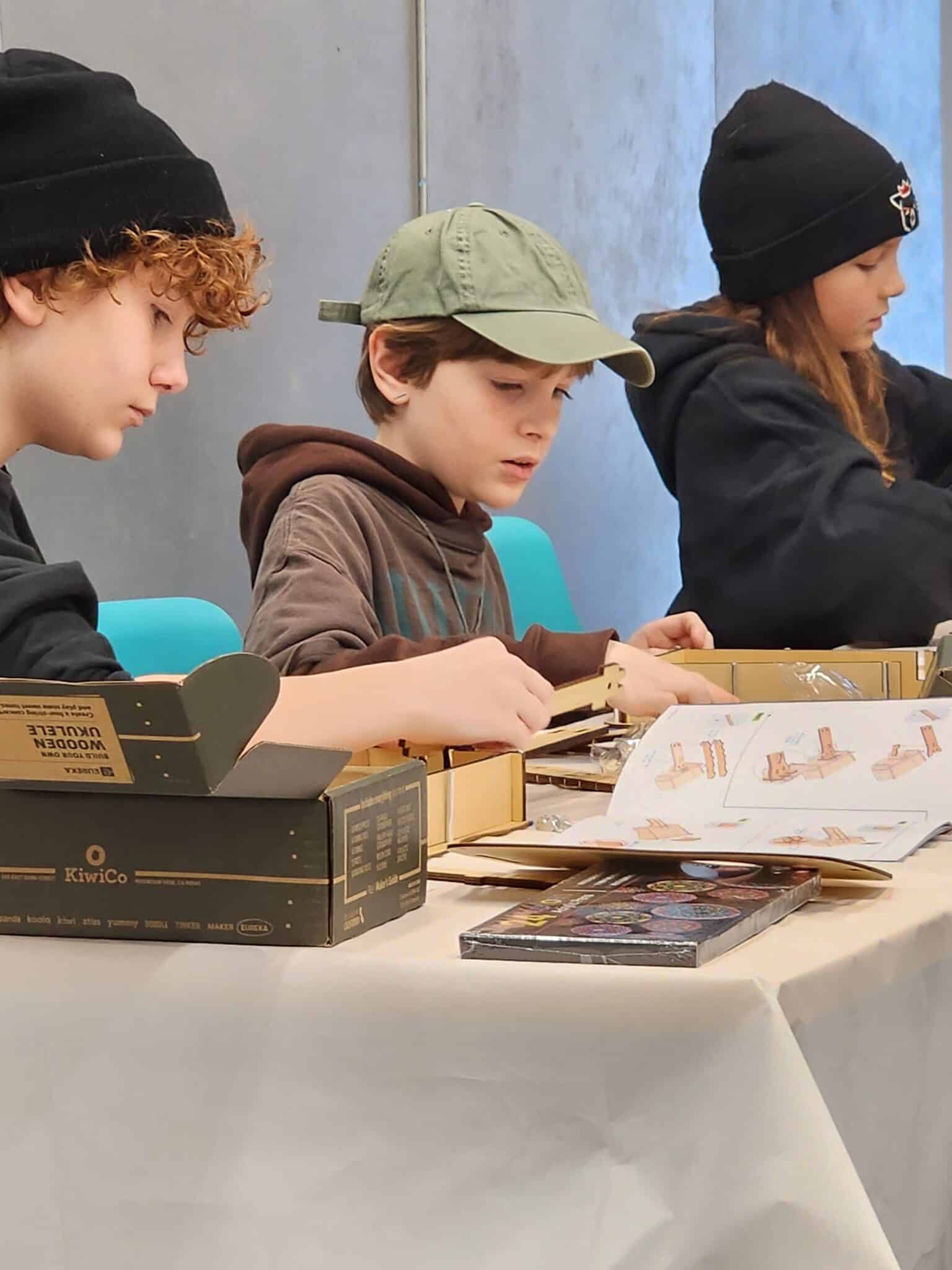At Christ the King Omaha Parish and School, students embraced an exciting engineering challenge today: constructing the tallest tower from wooden blocks. Teams navigated the Engineering Design Process, from defining the challenge to building and testing their structures. The air was charged with enthusiasm as students brainstormed, designed, and meticulously built their towers. The competition not only fueled creativity but also emphasized the importance of teamwork and effective communication. Through this hands-on experience, students not only reached new heights with their towers but also gained valuable insights into problem-solving and the iterative nature of engineering projects. It was a dynamic and engaging exploration that left an indelible mark on their educational journey.

In the dynamic and ever-evolving landscape of education, hands-on experiences play a pivotal role in shaping young minds. Today at Christ the King Omaha Parish and School, students embarked on an exciting journey, applying the Engineering Design Process to tackle a challenging project. This immersive experience not only fostered teamwork but also honed their problem-solving skills, providing a glimpse into the world of real-world engineering.

The Engineering Design Process Unveiled:
Define the Problem:
The first step in the Engineering Design Process is identifying and understanding the problem at hand. Students were presented with a thought-provoking challenge, sparking their curiosity and setting the stage for the creative process.

Research and Brainstorm:
Armed with the knowledge of the problem, students delved into research to gather relevant information. In collaborative brainstorming sessions, ideas flowed freely as students explored various solutions to address the challenge. This phase encouraged critical thinking and allowed students to consider diverse perspectives.

Design and Plan:
With a wealth of ideas at their disposal, teams began translating concepts into tangible designs. This phase involved sketching, prototyping, and refining their plans. The emphasis was not only on finding a solution but on devising an efficient and effective one.

Build and Test:
Hands-on learning took center stage as students translated their designs into reality. Through trial and error, they tested their creations, learning valuable lessons from both success and failure. This phase encouraged resilience and adaptability, essential skills in any field.

Evaluate and Iterate:
After testing, students critically evaluated their prototypes against the initial problem statement. This iterative process allowed for continuous improvement, emphasizing the importance of refining and optimizing solutions based on feedback and outcomes.

Communicate and Document:
Communication is a cornerstone of successful engineering projects. Students maintained engineering design notebooks, documenting their progress, challenges faced, and solutions discovered. This practice not only reinforced their learning but also instilled a sense of accountability and organization.

Teamwork in Action:
The collaborative nature of the Engineering Design Process was evident in the teamwork displayed by Christ the King Omaha Parish and School students. Each team member brought unique perspectives to the table, fostering an environment where creativity flourished, and ideas merged seamlessly.

The Importance of Hands-On Learning:
The application of the Engineering Design Process goes beyond theoretical knowledge. It equips students with practical skills that are transferable to various disciplines. From critical thinking to collaboration, this hands-on experience prepares students for the challenges they may encounter in their academic and professional journeys.
Today’s engineering challenge at Christ the King Omaha Parish and School showcased the power of experiential learning. By immersing students in the Engineering Design Process, educators not only fostered a deeper understanding of engineering principles but also nurtured skills crucial for success in the 21st century. As these young minds continue to grow, their experiences today will undoubtedly shape the innovative thinkers and problem solvers of tomorrow.



